-
#518 – The Adventures of Electronic (1979)








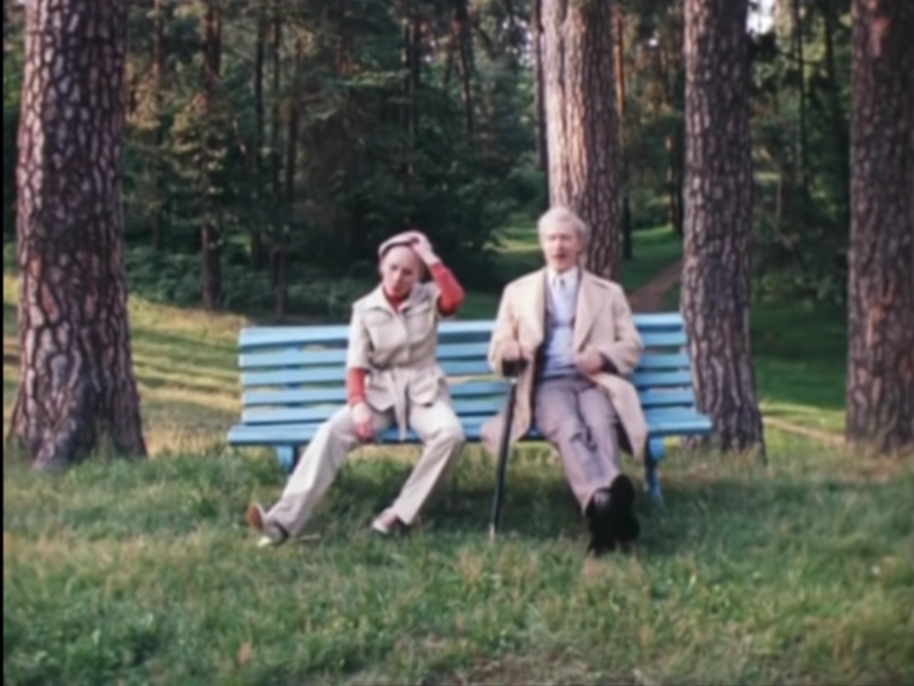

The Adventures of Electronic (1979)
Film review #518
Director: Konstantin Bromberg
SYNOPSIS: Professor Gromov has constructed a life-like robot boy named Electronic, based on the image of a schoolboy named Sergey. Electronic has the dream of becoming a real human boy, and when the Professor forbids him from interacting with the outside world, he escapes and runs into his double. Sergey has the idea of having them swap places, using Electronic’s super intelligence and strength to excel at school. meanwhile a criminal gang is spying on Electronic, with the aim of kidnapping him to use in a series of high-value heists…
THOUGHTS/ANALYSIS: The Adventures of Electronic is a 1979 three-part miniseries from the Soviet union. The story starts off introducing Electronic, a boy who is a robot created by Professsor Gromov to look human, and Sergey the human boy who Electronic’s appearance copies (who appeared on a magazine cover). The two eventually run into each other, and have the idea to swap places, so that Electronic can excel in Sergey’s classes at school, and Electronic is given the chance to live as a human; and naturally, hijinks ensue. The story is fairly obviously a combination of Pinocchio and The Parent Trap, although I’m not sure how accessible either of these were available in the Soviet union in 1979. Nevertheless, the story is simple to follow, and paces itself fairly well, with different things going on across the three different episodes of the series. Being aimed at children, there’s very mild threats and danger, but it’s pretty harmless. The series focuses more on humour, adventure, and the occasional musical number, and I imagine it would have been a fun and entertaining adventure for kids at the time. The story doesn’t really explore the range of potential of it’s set up, and often feels like a re-tread of the aforementioned Pinocchio and The Parent Trap, but you don’t really need to be groundbreaking for these types of films/series. The pacing is pretty solid, the characters develop at an even pace throughout, and there’s new elements added in as it goes along to maintain interest, so it does everything it needs to.
While Sergey and Electronic are up to their shenanigans, an international crime ring has been spying on Professor Gromov and, learning of Electronic’s existence, their boss plans to kidnap him to use his abilities to pull off a huge heist. As mentioned, the villains and danger isn’t too threatening as the series is made for kids, but it adds a little excitement to things. Apart from Sergey and Electronic (played by actual twins, but their voices are dubbed by different people), the rest of the cast play a minor role, but their appearance keep scenes energetic and busy, such as the gang of kids that Sergey and Electronic hang about with, the various teachers, and even a dog that joins the kids eventually. The familiar scenes of the school and the kid’s clubhouse also root the film in a very particular setting that the cast’s adventures revolve around, and makes a nice core along with the characters that interacts with the changing elements of the story, creating a nice balance.
The series was apparently very popular when it was released, and I think it’s easy to see why: it follows some tried-and-tested formulas story-wise, and also it’s produced fairly well, with solid camerawork and performances all round. It’s difficult to find too much wrong with it, since it’s aimed at a younger audience and is not intending to be groundbreaking. Overall, The Adventures of Electronic is an entertaining watch that hits the right notes, but is definitely something that would not stand the test of time, being firmly rooted in the time and place it was filmed. Some elements of the story are fairly timeless, but nothing original is added to make it worth a contemporary viewing.
-
#517 – Italian Spiderman (2007)



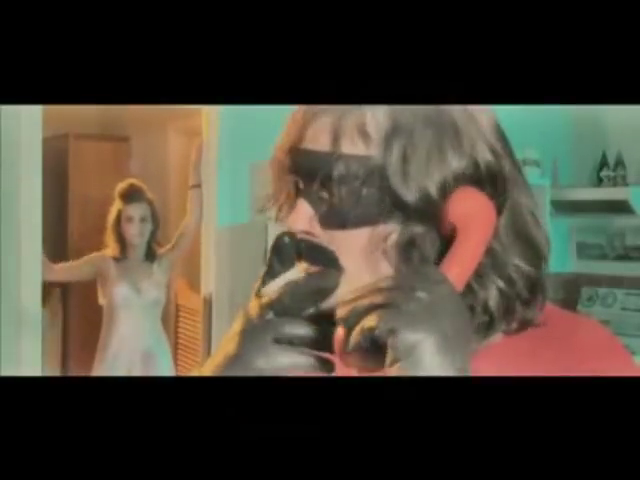

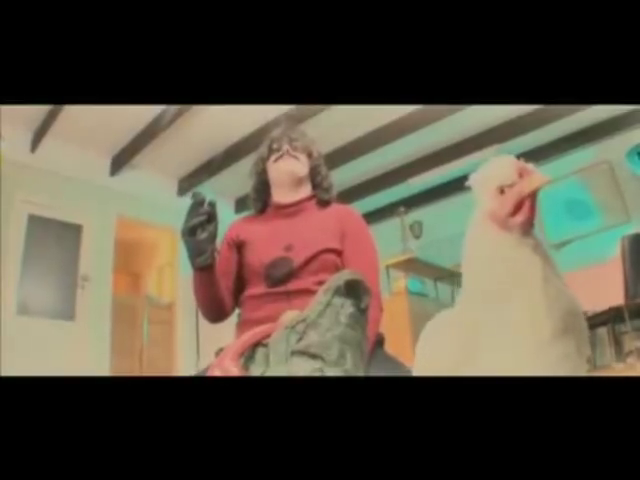




Italian Spiderman (2007)
Film review #517
Director: Dario Russo
SYNOPSIS: When an asteroid that falls to earth turns out to have the power to clone people, it is stolen from Professor Bernardi by Captain Maximum, who wants to use it to create his own personal army. The world’s only hope, Italian Spiderman, sets out to stop Captain Maximum and save the world before it’s too late…
THOUGHTS/ANALYSIS: Italian Spiderman is a 2007 short film, which is a parody of the various knock-offs and copyright-infringing films were made in non-English speaking countries (where the owners of the characters would probably never know the films were made in the pre-internet days). Italian Spiderman is unsurprisingly a parody of Spiderman, and in the opening we see Spiderman playing a poker game and blowing his opponents away with a shotgun, which should give you an idea of how accurate the representation of Spiderman is. The plot of the film concerns an asteroid that falls to Earth and has the power to clone people when exposed to it. This obviously attracts the attention of the evil Captain Maximum, who steals it in order to create an army to take over the world, leaving Italian Spiderman to stop him. The plot would be pretty standard for the type of films it is trying to parody, and leaves scope for all manner of ridiculous setups to occur as Italian Spiderman battles all sorts of traps and villains. Parodying films which are already absurd and ridiculous certainly presents the problem of how you add anything to the original or present it in a different way. Italian Spiderman actually handles this pretty well: it is able to throw in plenty of surprises by adding really ridiculous things out of nowhere, and also throwing just the right amount of self-awareness in to add something new with the parody. With a runtime of just thirty seven minutes, it doesn’t overstay it’s welcome, and accomplishes all it can probably do in that time.
Italian Spiderman (he is never just called “spiderman,” as an example of the aforementioned self-awareness the film has), in keeping with the type of film it is parodying, doesn’t look like the typical spider-man nor does he have any of his powers. The rest of the characters fill typical inconsequential roles that nevertheless keep some semblance of structure in the film. The use of practical effects, combined with the obviously misplaced stock footage, make for some humourous setups. I imagine when this was released online in 2007 it would have been quite popular, at a time where these sort of films were just being discovered by English speaking countries. Nowadays it might have less of an impact because the original films are so easily available and just as silly, but still, Italian Spiderman is a smart parody that balances self-awareness with the original absurdity which makes the films it is parodying so infamous.
-
#516 – Gila! (2012)

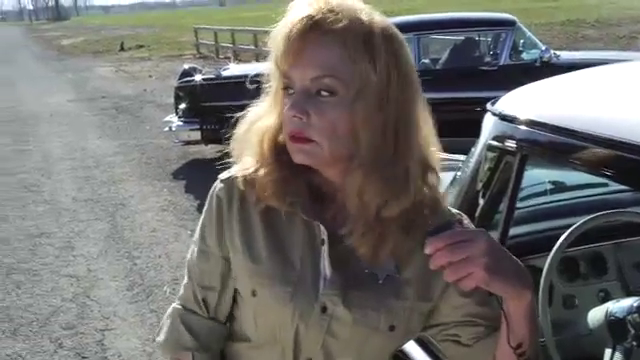







Gila! (2012)
Film review #516
Director: Jim Wynorski
SYNOPSIS: Residents of a remote mid-western town are mysteriously disappearing, which turns out to be the work of a giant lizard. Chase Winstead is a tow truck mechanic in town, and teams up with the residents of the town in order to try and stop the monster before it eats everyone…
THOUGHTS/ANALYSIS: Gila! is a 2012 film, and a remake of the 1959 film The Giant Gila Monster. A b-movie is a strange choice for a remake, but The Giant Gilla Monster had some brand recognition, as it was one of the first double-feature films for drive-in theatres, and was fairly popular upon release. The story is essentially the same as the original, with a small American town being terrorised by a giant lizard, and Chase Winstead, a local tow truck mechanic, works with the rest of the town to try and uncover the mystery and put a stop to it. Usually with these sorts of remakes, the story is at least updated to the present day to make it more relevant, but here, they have kept it set in the 50′s like the original, which really does beg the question what the purpose of this remake is. There are are only two big differences in the story: one is that the location is a mid-west town, rather than a southern U.S. one, and the inclusion of Waco Bob, a rebellious teen who sort of serves as Chase’s nemesis and a villain role. Neither of these really add in anything interesting, and there’s just an overall feeling that the whole remake is pointless: it changes nothing, it doesn’t have a bigger budget or production to make it a more significant and serious film, and it clearly stretches itself to over ninety minutes by padding out scenes needlessly. There’s also a rather big plothole where the mayor’s daughter Betty is clearly eaten by the lizard at the start of the film, but is found alive later on. Maybe this is due to the film having three writers and little communication, and why a remake that just copies it’s original needs three writers is a bit of a mystery.
The cast of characters is fairly large, and there is some effort in trying to give them all a bit of character, but ultimately they’re still all a little flat. Don Cheadle, who played Chase in the original 1959 film, has a minor role here, which is a nice bit of trivia. You feel like you get to know the residents of the town, but they’re about as interesting as you might expect a remote mid-west town to be. Combined with the sub-par acting,
As mentioned, one of the reasons to remake a film might be to produce a film using a larger budget, but this is about as low-budget as the original. The money clearly went on two things: the first is renting some 1950′s era cars, which do look authentic, but they look way too clean, and they obviously can’t do any stunts or anything risky with them, meaning we simply see them driving up the same straight road for the majority of the time they’re on screen. Secondly, the lizard is pure CGI, and even by 2012 standards, it looks absolutely terrible. It’s running animation is so comically bad as it lifts each foot up into the air I don’t know how anyone thought it looked good. There’s at least a few 50′s era songs to help set the scene, and some “new” songs of the era made for the film too. Overall, Gila! feels like a pointless remake that barely changes anything from the original. The story is all over the place and has plenty of plotholes, the characters don’t stand out too much, and any attempts to flesh out their characters are often marred by poor acting. The atrocious CGI for the lizard means that you won’t be taking this too seriously. It may be good for a laugh, but Gila! is pretty bad, especially when you consider it mostly just copies the original with no attempt to innovate.
-
#515 – The Giant Gila Monster (1959)



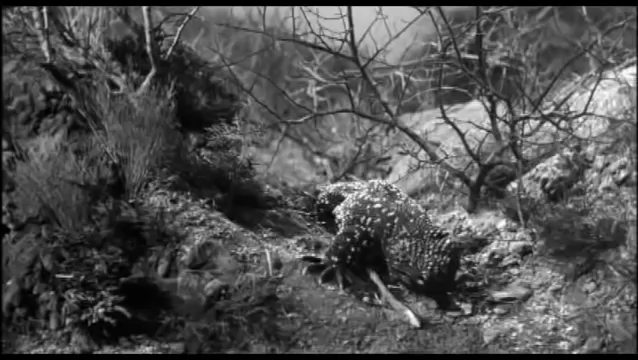


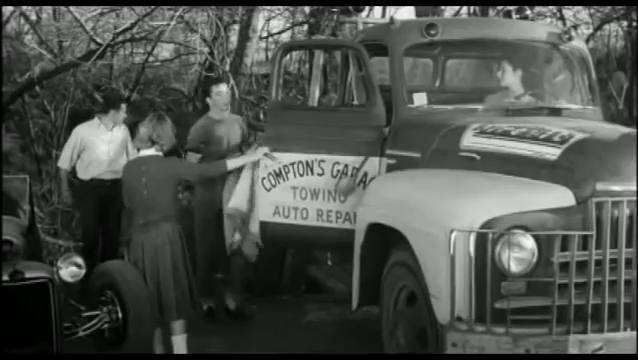



The Giant Gila Monster (1959)
Film review #515
Director: Ray Kellogg
SYNOPSIS: When a young couple go missing, their friends try to find them with little success. One of them, Chase Winstead, is a mechanic and tow truck operator, who gets called out to strange goings on in the ravine near town. Could everything be the work of some sort of giant lizard monster?
THOUGHTS/ANALYSIS: The Giant Gila Monster is a 1959 film, produced as a drive-in double feature alongside The Killer Shrews, typically regarded as the first “double feature” films that premiered back-to-back in drive-in theatres. In the opening scene, we see young couple Pat and Liz in their car at a local ravine, when they are suddenly attacked and their car falls into the ravine below. The only clue of the culprit is a giant, scaly foot that comes down upon the car. Later on, we see a group of young friends hanging out at the local diner, wondering where their friends Pat and Liz are. The sheriff is unable to find them, and Pat’s Father is unhappy with the investigation. Chase Winstead is a young car mechanic and tow truck operator in town who eventually stumbles upon the wreckage of their car, and a number of strange incidents that he happens upon while doing his job suggests that something strange is happening in the ravine outside of town. The film is very much a typical b-movie monster film, and as mentioned, one of the first films produced especially for the double feature drive-in theatres. The format is very typical of those films, featuring a monster terrorising local residents, and a runtime of just over one hour. Also very typically, the film barely deals with the monster itself, leaving it a mystery until the final few minutes of the film. The majority of the film just focuses on the goings on of the town, including the Sheriff’s investigation, Chase’s towing job, his family, and so on. There are a lot of scenes that just feel pointless and go nowhere. Having the “monster” appear on screen through-out interacting with the cast would have been logistically impossible, because it is a lizard that moves about on model sets, meaning we never see the monster and the cast on screen together. We should remember the film’s target audience though: young people (teenage boys) taking their dates in their cars to the drive-in theatre. As such, the film centres mostly around the young cast, who all have their own cars and are coupled together, as well as Chase being a mechanic obsessed with working on his car. Oh, and there’s some contemporary (for the time) music and dancing too. All of of this adds up to definitely appealing to that target audience, but their is very little substance to the film itself in terms of story, or highlighting the giant monster threat. As such, you’ll be looking back at this one with befuddlement at how any of this fits together. You can be forgiving with the format being notoriously low budget, but there’s so many scenes which just aren’t interesting or have no relevance, meaning that it won’t be very entertaining out of the context in which it was made. I suppose the less interesting scenes give viewers time to interact with their dates in their car (I’ll lave that to your imagination…).
The cast of characters, again, are meant to resonate with their target audience: the teens driving cars, Chase always talking about tuning up his own car…the main focus is on them being relatable and relevant. There’s some attempt to expand Chase’s character by introducing his family and such, but it all seems a bit superfluous. There’s also a lot of minor characters, like the Sheriff, and Pat’s Father, who show up from time-to-time to explain the plot, or try and justify any inconsistencies in the story, but that is really the limits of their purpose. There’s also a comic relief character who doesn’t really do anything (and isn’t really funny), and also a real DJ from the area it was filmed has a minor role too, which again adds some relevancy to the target audience. Again, there’s just so many scenes where the characters just talk about really minor or tangential things to pad out the run-time without actually developing the characters. Still, there’s at least some attempted variety with the characters, and an effort to make them relatable. It’s not that they’re all necessarily bad, just a bit harmless.
The budget is pretty average for these types of films. As mentioned, the “gila” monster is actually a lizard (Mexican beaded lizard, to be precise) that stomps around on a model set, so you never see it interact with the cast on screen at the same time. There’s at least plenty of shots that show off the local area and set the scene, and the film definitely has a vision in that respect. I think that sums up the film as a whole really: it aims to appeal to a specific audience, and fills it with relatable characters, music, and a local setting (in/around Dallas, where it would be premiered). In this sense, I think the film works. On the other hand, the “monster” element is pretty weak compared to similar films and barely plays a part in the story. Also, due to being so entrenched in its time, it doesn’t really hold up as a viewing experience today. Back when it was released though, it achieved a fair amount of success, and was released across the country and abroad, so it must have resonated at the time. Unfortunately, it doesn’t hold that same interest nowadays, except historically, as being one of the first drive-in double features, and the beginning of a cinematic phenomenon.
-
#514 – The Day of the Triffids (2009)










The Day of the Triffids (2009)
Film review #514
Director: Nick Copus
SYNOPSIS: A solar flare visible across the world has the effect of making everyone blind, leading to the collapse of society and government. This also has the consequence of releasing the Triffids, man-eating, mobile, plants into the world after their containment facilities fail. Bill Masen, a scientist who studies the triffids, avoids being blinded by the flare due to having an eye operation, and awakens to find he is one of only a few people still able to see. Bill navigates the remains of civilisation, teaming up with broadcaster Jo Playton to try and survive this new world, and also to stop the triffids from feeding on the sightless population…
THOUGHTS/ANALYSIS: The Day of the Triffids is a 2009 two-part TV series, based on the 1951 novel of the same name by John Wyndham. The plot of the film is updated from it’s origins in the 1950s, making the triffids, a race of man-eating plants that can move, the answer to global warming through the oil they produce as an energy source (the original novel was similar, but didn’t have the global warming angle). Bill Masen, a scientist working with the triffids, is attacked by them and has to have an eye operation to save his sight. Meanwhile, a solar flare that is visible worldwide causes the vast majority of people to lose their sight. Bill, having his eyes bandaged, is one of the fortunate ones, and unwraps his bandages to find society collapsed and everyone around him stumbling around blind. The plot of the series is more closer in many respects to the original novel than the 1962 film, and the changes it makes to bring it up to date fit in well. One of the main issues I have with the story is the unrelated events of the solar flare (meteor shower in the original) and the release of the triffids. Given that both cause blindness, it makes it seem like there is some connection between the two, whereas apparently it is just coincidence. The 1962 suggested a link between the two (that the triffids came to Earth by a meteor), but no such connection here. I’m not sure how convincing it is either that so many people went blind, when apparently you could avoid it simply by having your eyes covered, or being underground (such as Jo in the London underground), surely that would leave a lot more people sighted? Nevertheless, most of the main plot points from the book are there, but slightly tweaked to make a more conventional flowing narrative. The original novel was very much a post-apocalyptic survival story, whereas this adaptation fits the characters and story into more conventional film roles, for example, separating characters into specific scenes and settings, and having an overarching villain. The series flows fine enough, but there’s a point in the middle where things feel a bit without purpose and lost, and has no idea what to do with the characters.
The characters themselves have likewise had a few changes to reflect the more modern setting, and the serial format. Bill Masen is a fairly unremarkable lead, but that’s okay, because the story is more interesting when it focuses on the world rather than the characters. Bill’s character is expanded by introducing a personal relationship with the triffids, due to his parents being researchers that studied triffids, and his Mother being killed by one. It is an element that comes into play more in the latter half of the film when Bill meets his Father, but it all feels very unoriginal. There’s also this strange recurring flashback from when Bill was a child and his eyesight was saved after a triffid attack by a shaman and a mask of some sort, but I didn’t really get the significance of it, and it really only pays off in the final minutes for an insignificant bit. Torrence, played by Eddie Izzard, takes up the villain role, and he is set up as a man who will do whatever it takes to survive (he mostly replaces Beadley from the original novel). His quirky, whimsy personality does feel a bit out of place in a post-apocalyptic setting, and I don’t think the series needs an overarching villain in a world where the world itself is the biggest enemy, along with the triffids, of course. One thing that is consistently evident is that nobody seems to know how to write women and children: Jo is the female lead, but her dialogue and everything she does just feels so ineffectual that it’s almost like she isn’t there for the most part. When the young girl Susan and her sister turn up later on too, their characters just don’t go anywhere or develop a bond with the others. There is a severe lack of coherence and relationship building between the characters which is overlooked in the streamlining of the plot into a two-part series.
Production-wise, the series looks good, with plenty of scenes that show off a ruined London, and plenty of extras that populate the chaotic streets. The triffids themselves are CG monsters that are mostly shown obscured in shadows or partly obscured, but I think that’s probably for the best, as there’s no way to make CG walking plants look completely threatening. There’s a good sense of scale, and some competent production, but The Day of the Triffids has a certain blandness borne from some streamlining elements of the plot to fit the series format, and an inability to write some of the characters to be in anyway significant. It’s watchable, mildly entertaining, but yes…bland.
-
#513 – Where Did All the People Go? (1974)








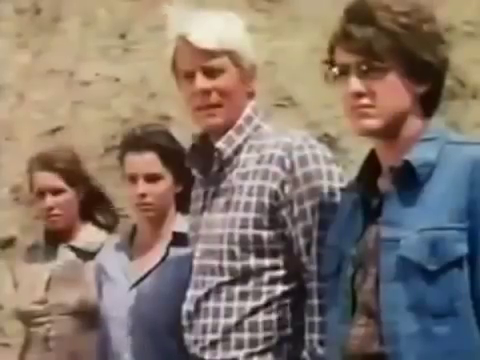

Where Have All the people Gone? (1974)
Film review #513
Director: John Llewellyn Moxey
SYNOPSIS: Steven Anders and his family are enjoying a camping trip in the mountains of California. While Steven’s wife, Barbara, returns home for work, the rest of the family stop and enjoy the remainder of their holiday. While exploring a cave, an earthquake strikes and they head outside to find that some form of solar flare has happened, and they can get no communicate with the outside world. The family head home to try and find Barbara, finding that almost everyone in the world has vanished, leaving only white powder where their bodies once were…
THOUGHTS/ANALYSIS: Where Have All the People Gone? is a 1974 TV movie. The film focuses on Steve Anders and his family, as they are on a camping trip in the Californian mountains. Steve’s wife Barbara has to return home for work reasons, leaving Steve, their two teenage children, and a local farm-hand. The family are down in a cave when an earthquake hits, and they escape to find the farm-hand outside that some form of bright flash happened in the sky at the same time. Unable to get into any contact with anyone, and with the farm-hand suffering what appears to be some form of radiation poisoning, the family try and get back home to Barbara, along the way finding that nearly everyone who saw the flash of light has died and become a heap of white dust. The story is focused around Steve and his family, and the people they pick up and encounter along the way. Initially starting with no answers, they slowly build up theories about what is happening, but their focus is always on getting home to their wife/mother. The film starts off pretty empty, and with characters that are very cookie-cutter and without personality, but slowly, they start to build up some particular responses to what is going on around them, and things start to pay off. The different scenes are a bit hit-and-miss: sometimes they work, sometimes they don’t. As such, the film can feel a bit uneven and disjointed. I don’t think there’s too much original in the film’s portrayal of a world where everyone has disappeared (an idea not unfamiliar to post-apocalyptic films), but it also avoids the common depictions of post-apocalypse scenarios by tuning away from global nuclear fallout and focusing on a family drama. Given that this is a TV movie, which typically focus more on entertainment and action, it is a rare example of such a movie that instead takes its subject matter seriously without the frills.
As mentioned, the characters are very much plain, stereotypical cut-outs, but they do start to grow a little as the film goes on. Steve keeps his family together, while his son David is a science-based person, who unravels a little as the film goes on. Deborah doesn’t really have too much to do other than do some occasional narration (which doesn’t add too much), and the characters of Jenny and Michael, whom the family they pick up along the way, have small, but interesting character arcs that adds something of substance. By the end of the film, there’s some good dialogue and twists that have cohered the characters into a good unit, but they never fully shake off that mould from which they begin.
The open-ended nature of the film leaves us with no real answer about the state of the world and it’s survivors: all we know is about are the characters we travel with, and who they encounter, which says very little. This isn’t necessarily a bad thing, but might not be for everyone who might want the journey to have a more substantive pay-off. When we are given explanations to what is going on, the science seems a bit far-fetched, such as people being turned into white dust being caused by a large solar flare and a particular dominant gene is a bit much the more you think about it. Again, like most things in this film, if you don’t think too much about it and focus on the characters and the depiction of the post-apocalyptic world, you have something that is mildly interesting to watch, if you give it a chance to get going. It’s nothing mindblowing or groundbreaking, but there’s some competency at work that brings the film together. In terms of TV movies, you can do worse, but you can certainly do better.
-
#512 – The Day of the Triffids (1962)





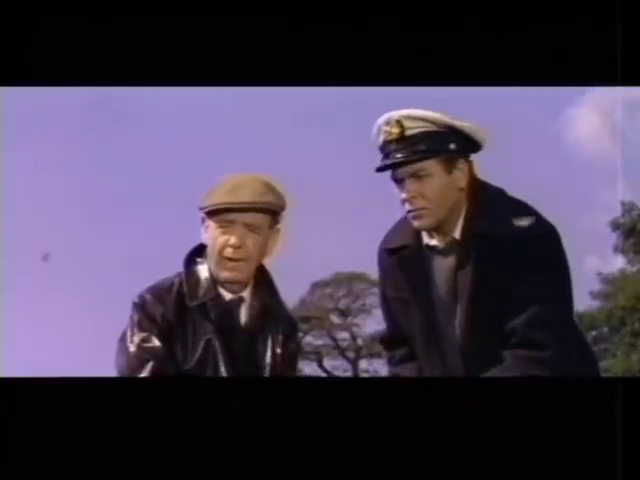



The Day of the Triffids (1962)
Film review #512
Directors: Steve Sekely, Freddie Francis
SYNOPSIS: After a meteor shower that is seen across the globe, nearly everybody on Earth is blinded by it. Billy Masen, a merchant navy officer, avoids being blinded as he has had his eyes bandaged up from an operation. He takes off his bandages to find he is one of the few people in the world who has not been blinded, and also that the meteor shower has released a strange plant called triffids that are multiplying rapidly, and attacking people…
THOUGHTS/ANALYSIS: The Day of the Triffids is a 1962 sci-fi horror film based on the novel of the same name by John Wyndham. The film begins with introducing Bill Masen, A merchant navy officer, who is resting in hospital after an eye operation. While his eyes are covered up in bandages, a meteor shower seen across the world blinds almost everybody on Earth. Bill is unaffected because of the bandages covering his eyes, and wakes up the next morning to remove his bandages and find that everyone else around him has gone blind. This has caused not only to society to break down and all services and communications to cease, but also the meteors have released a strange species of plant called Triffids that can move and attack people. The film is a balance between a post-apocalyptic survival film, and also a classic B-movie monster movie, and for most part, it is balanced quite well. The tone of the film remains serious and desperate, without too much of that low-budget b-movie tone undoing it. There’s also a good balance between the two sides of the story presented to us, with Bill and those he meets trying to survive in the world, and scientists Tom and Karen Goodwin, isolated from the world at a remote lighthouse, try to investigate the triffids and find a way to stop them, separating the explanations and exposition from the drama-heavy story of Bill and those around him trying to survive. It should be noted though, that the film is not a particularly faithful adaptation of the book, as it moves some of the settings and omits some characters. There are other adaptations that are more faithful, so you may want to look there if you want something closer to the book.
Apart from the good balance of characters and tone, there’s also some good shots and settings that set the scene rather well. Shots of the streets of London and Paris deserted are rather striking, and the scenes exploring the fallout of everybody being blind, from mass panic and planes being unable to land gives us some dramatic moments with big consequences, but the main focus is on Bill and his group’s isolated struggle for survival. The triffids themselves look like a b-movie creature, but manage to be quite menacing and threatening at some points, particularly in one scene where you see a hoard of them amassing behind an electric fence.
The ending is perhaps the weakest part of the film, and again something that deviates from the original novel: it turns out that the triffids dissolve in seawater…and that’s it. The world is saved apparently. It’s an ending twist similar to The War of the Worlds, which released a film adaptation in 19053, and had the invading Martians unable to survive in the earth’s atmosphere outside of their protective environments. We’re not given an insight into how the world is meant to carry on with nearly everybody blinded, but I suppose Bill’s story has a solid ending with him and his cohort reaching safety. One other notable aspect of the ending is that some survivors who have been trapped in a submarine emerge, and…go to a church to give thanks for their survival. This is an odd choice for an ending, particularly because Wyndham was not a religious person, but a a fair few of these sci-fi horror films (The Day the Earth Stood Still springs to mind), where ultimately God and religion are shown to still be all-powerful in the face of science. It’s an ending that comes out of nowhere and isn’t necessary, but is not uncommon in films of this era. Overall, The Day of the Triffids has some good aspects to it: it benefits from having the structure of the novel to balance out the different aspects of the film, but becomes a lot weaker when it deviates from it. The Triffids are a fairly terrifying monster in particular scenes, and are more memorable than a lot of monsters, but their undoing is a little contrived and uninspired. A good example of a b-movie monster flick, with some post-apocalyptic elements that heighten the drama.
-
#511 – Killdozer (1974)










Killdozer (1974)
Film review #511
Director: Jerry London
SYNOPSIS: At a remote construction site, a group of workers uncover a strange meteorite while using a bulldozer. This vehicle becomes possessed by the strange energy from the rock, and begins killing off the workmen at the site. The survivors must find a way to survive and put a stop to the rampaging vehicle before it bulldozes them as well…
THOUGHTS/ANALYSIS: Killdozer is a 1974 TV movie which, as the title suggests, is about a killer bulldozer. The film is a typical sci-fi horror film, with the less typical set-up of the big bad being a construction vehicle. Nevertheless, the plot unfolds as you would expect, with the bulldozer killing off the workmen at the site one by one as they try to work out what is going on and how to survive. The premise of the villain being a bulldozer is the only unique aspect of the film, and as you might imagine, it brings with it a whole host of implausibility about the whole set-up. The film is based on a remote island with only one two-way radio, so when it is destroyed by the bulldozer, they have no means to communicating with anyone (back in 1974 when nobody had mobile phones…). This isn’t the really big problem though: it just seems like a killer bulldozer would not be that much of a threat, given both how slow it moves, and also that it would not be able to get up large inclines. As you might suspect, the characters don’t really seem to consider this, and keep meeting their end with the bulldozer slowly ploughing into them. The film does try to justify it’s decisions and emphasise the futility of the situation, but in a film about a killer bulldozer, you’re never going to be completely convinced of the severity of the entire situation. Then again, it’s a very no-frills production, with a lack of special effects that gives it a gritty rootedness, which makes it in a roundabout way, more believable.
The characters are a group of pretty down-to-earth characters: being a group of construction workers, they all have a similar outlook and mindset. As such they don’t all have distinct personalities on a trope-per-character basis, but while they all overlap, that makes sense given they all have the same job and are all put into the same situation. Clint Walker and Robert Urich as the leads have just enough differences in their personalities to make a dynamic, conflicting relationship form between the two of them, but that’s all the character development you really get. As you might expect, the bulldozer itself doesn’t have much of a character because…it’s a bulldozer. That’s not to say you can’t give murderous vehicles personality and make them scary, because there are quite a films that have done so (albeit after this film was released). I think if there was more of a logic to how the bulldozer was operating, or why it was running amok it would make it more interesting.
One of the more surprising aspects of the film is that it is actually based on a short novel released in 1944, and the basis for a comic adaptation released in the same year as the film. What is also interesting is that the writer of the novel, Theodore Sturgeon, did the re-write of the film too. There’s a lot of changes from the novel, such as being set in the “present” rather than the “present” of the novel in WWII. Being a TV movie, the budget probably wouldn’t have been able to account for the origins of the energy that possesses the bulldozer; which in the original novel was a remnant of a weapon used by an alien race against the ancient race that lived on the Earth (the comic also explored this a little too). In a way, this actually helps the film, insofar as it keeps the film grounded and avoids any fantastical or ridiculous sci-fi elements that open it up to mockery or make it even more unbelievable. Killdozer is about what you would expect from a TV movie: a low budget production that is nothing particularly ground-breaking. This down-to-earth production actually helps the film rather than hinders it though, and sharpens focus on the characters and this bizarre situation they find themselves in. The whole premise is still absurd, and there’s definitely better “killer vehicle” movies out there, but this one works well with what it has.
-
#510 – Trancers 6 (2002)








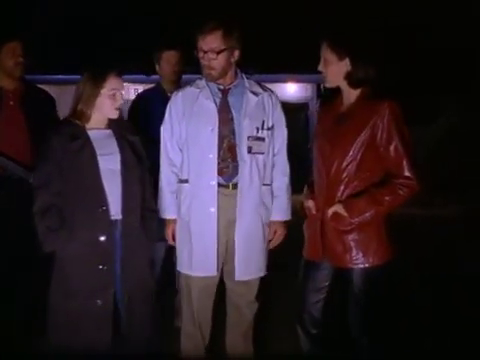

Trancers 6 (2002)
Film review #509
Director: Jay Woefel
SYNOPSIS: Trancer hunter Jack Deth is once again sent “down the line” back in time to hunt down a new Trancer threat. He ends up in the body of his daughter, whose lifestyle certainly doesn’t fit with his own. In this new body and life, Deth must hunt down the Trancer threat and put a stop to it before his daughter is killed and he is wiped from existence.
THOUGHTS/ANALYSIS: Trancers 6 is a 2002 sci-fi film and the sixth film in the Trancers film series. In a return to the original premise of the films, Trancer hunter Jack Deth is sent back in time to inhabit the body of his daughter in the 21st century, to find and counter a new Trancer threat before they can kill his daughter and erase his existence. After the weird fantasy adventure of Trancers 4 and 5, this one returns to a more simple sci-fi action film. The absence of Tim Thomerson as Jack Deth in this film removes the only redeeming aspect of this film franchise: his caricature of cheesy action heroes was so ridiculous that it would be entertaining. His appearances in this film are limited to archive footage from previous films, and a stunt double playing his barely visible body strapped to a table in the future. Instead, we get Jack inhabiting his daughter Joanne…who is also his great-great grandmother, managing to create some sort of paradox or another, but this is glossed over, as the film doesn’t really focus on details in general: it’s straightforward, to the point, but that lack of detail really slows the film down after the first act, where it becomes apparent the film has very little substance. The film manages to feel both like a low-budget film from both the 80′s and the early 2000′s at the same time, which I suppose makes sense, but being released eighteen years after the first film, there’s very little progress to show in terms of story, production, lore, or design.
Joanne (Jo) is basically everything Jack Deth isn’t: a tee-total, vegan, meek nerd with a dull career. The majority of the humour in this film basically derives from Jack Deth being his foul-mouthed, smoking, misogynistic self, retorting everything that is said to him with a cheesy or inappropriate one-liner. The film is very much a one-trick pony in this regard, but honestly, it retains it’s entertainment value throughout the film, and it is genuinely funny in parts by virtue of how purely cheesy it is. This has always been the Trancers films best aspect, and it is good to see that even without Thomserson, they are still able to pull it off. Zette Sullivan as Jo Deth manages to pull off Jack’s style of speech and deliveries pretty well, and you can really believe that Jack is inhabiting her body. The line delivery is a bit flat sometimes, but there’s definitely worse things about the film. The rest of the cast; from the supporting characters to the villains, really do not leave an impression. The new Trancer threat isn’t really explained after Jack supposedly wiped them all out in the previous films: apparently it has something to do with meteors and radiation or something, but as mentioned, the intricacies of the plot aren’t really the focus of the film.
Being a production by Full Moon Entertainment, you should expect a low-budget production, but this is bad even by their standards. The sets are limited to empty building, corridors, and some rural outdoors scene in the middle of nowhere. The special effects are really bad, but thankfully only used once when a guy is thrown out of a high-rise building, resulting in a hilariously bad effect. The gore and other effects are pretty standard, and are nothing too noteworthy; a lot of the production is very much what you would expect from these films, but there’s also a distinct lack of trying to do anything unique, and an added amateur-ness in the camera work, acting and locations. Trancers 6 is a bad film, there’s no escaping it: it is dull, poorly produced, and very threadbare on plot that it feels somewhat pointless. Despite all of that though, it still manages to recapture the absurd, over-the-top character of Jack Deth even without Thomserson’s portrayal, and the twist of putting him into a young woman’s body is just different enough to provide new entertainment value in the whole set-up. The film definitely relies on this sole gag to carry the whole film, but if you’ve made it through the previous Trancers films and got some laughs and entertainment from them, you can probably get a little more out of this last one.
-
#509 – Godmonster of Indian Flats







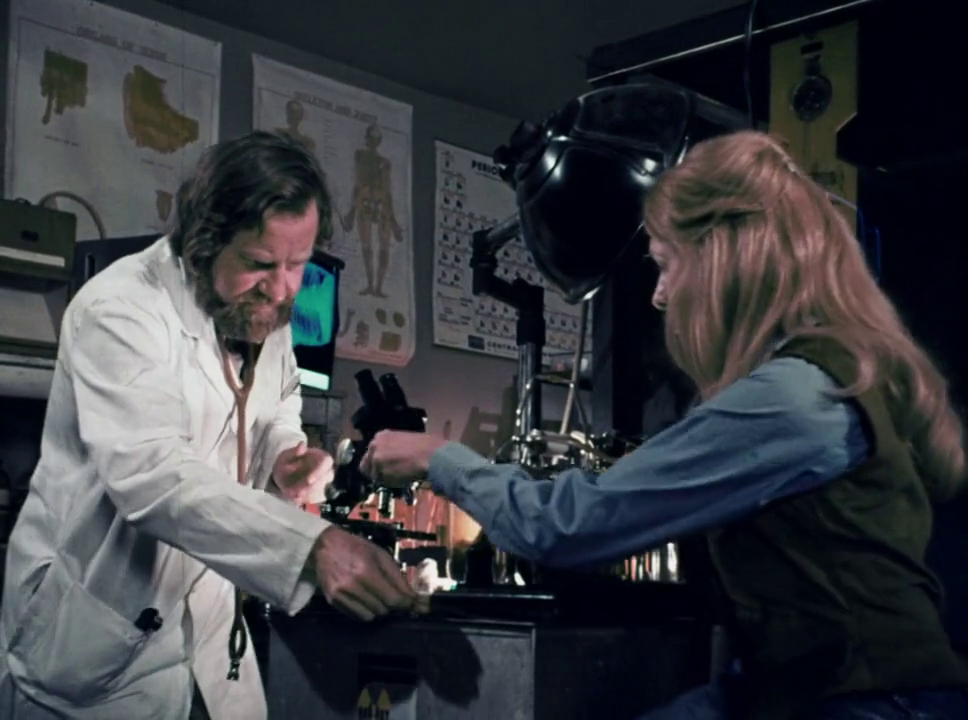



Godmonster of Indian Flats (1973)
Film review #509
Director: Fredric Hobbs
SYNOPSIS: Following a big gambling win and passing out in a drunken stupor, rancher Eddie finds a strange, large embryo on his ranch. Professor Clemens takes the embryo to his laboratory for study. meanwhile, a businessman attempts to buy property in the town for mining development, but the mayor and the secret society of the town have other ideas, as they wish to preserve the legacy of their town as an “old west” place for tourism…
THOUGHTS/ANALYSIS: Godmonster of Indian Flats is a 1973 western horror film. In the opening, we see rancher Eddie winning big on the slots and getting taken for a ride by some of the townsfolk. He is taken back home and awakens the next morning to find a large embryo. Local anthropologist Professor Clemens and his research assistant Mariposa take the embryo to incubate it, where they believe it to be the monster that has been talked about in local legends. Meanwhile, a wealthy businessman named Barnstable is trying to buy land in town to get the mines operational again, coming up against the mayor who wants to preserve the “old west” feel of the town to keep tourists coming in. These two main threads of the story are the main issue of the film, mainly because they develop almost separately from each other, only really crossing over at the end. If you want to see a “weird west” type of film consisting of a Western combined with other genres, you don’t really get that because the genres stay very separate for the vast majority of the film. It’s really difficult to figure out what is going on in the story or what the motivations for the characters are when there are all these unconnected things going on. The film sets itself out as some kind of western horror (judging by the title), but most of the film sees the monster stuck in a laboratory, and instead focuses on the goings on of this dusty town. There’s definitely a lot of effort put into creating the atmosphere of an old west frontier town in the Southern U.S., and it does set it up fairly well in the beginning, but when it comes to building a set-up and characters around it, there’s very little cohesion and direction to drive the film.
There’s plenty of characters that are laid out and the setting is constantly built-up through the expansive shots of the landscape, and the dusty, isolated town. There’s definitely a vision in that regard, but there’s so many strange decisions with respect to the story that it becomes a series of bizarre events that are consistently inconsistent. The scene with the funeral of a dog whose death was staged to make Barnstaple look bad is just so absurd I don’t know how you’re supposed to take it seriously. The acting is also pretty dire so as to alienate the viewer from the story even further. The monster itself we see in bits and pieces until the end of the film, where we are treated to the form of a deformed, mutant sheep of some sort. Trying to make a sheep look threatening seems like a fruitless endeavour, but they certainly tried regardless. It always, however, looks like a sheep, and so isn’t that scary or horrifying.
There’s definitely some arguments for it being a “so bad it’s good” film, with the pure weirdness in the story and it’s random jumps in tone that come out of nowhere. In this way, it is certainly entertaining and not boring, but you will be constantly wondering how all this fits together. I feel like there’s definitely a vision that grounded the production of this film, specifically in brining this old west town and it’s population and culture to life, but anything on top of that, from the story, the characters, and the whole monster thing are so convoluted that it’s difficult to take it seriously. Overall, Godmonster of Indian Flats is just plain weird: it has all of these things it wants to do, but no idea how to bring them together. The parts where the film tries to take itself seriously are offset by the incomprehensible plot, unimaginative characters, and flat acting. Maybe some people would describe it as “so bad it’s good”, and there are certainly some points where that is the case, but on the whole, I think it just falls short of having that entertainment value.